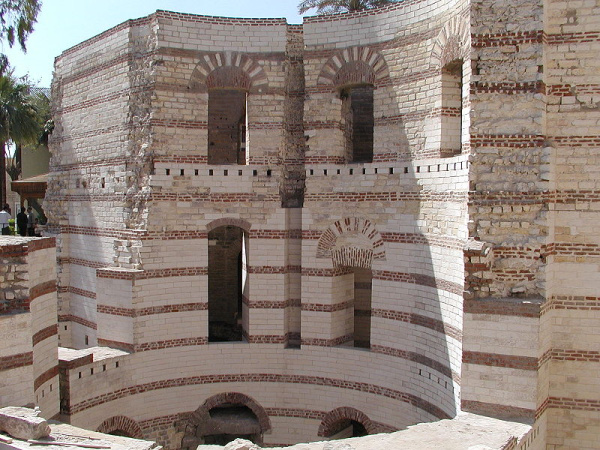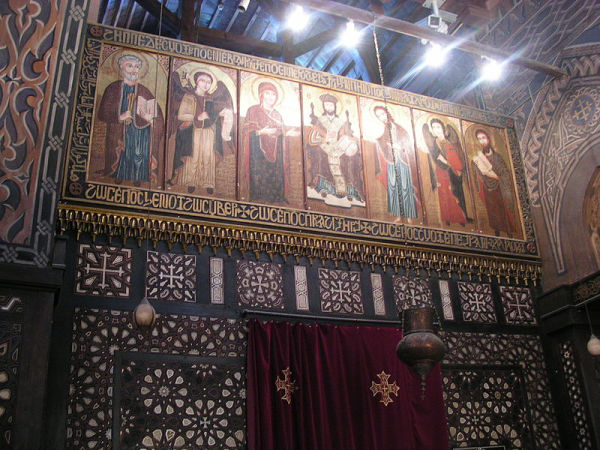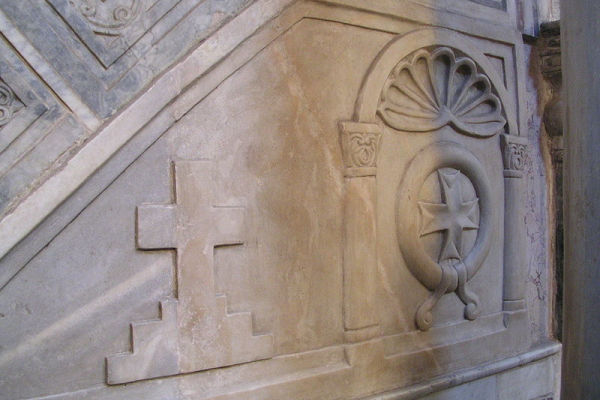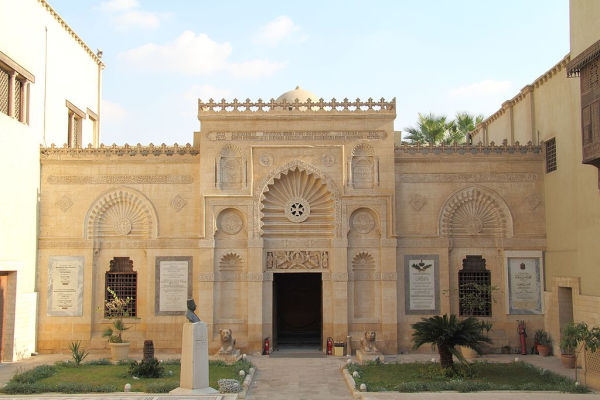Coptic Cairo and the Hanging Church
Coptic Cairo and the Hanging Church
Coptic Cairo and the Hanging Church
-
Hannah
-
Hannah

In the year 49 AD, some 19 years after Jesus’s death and ascension to heaven, his disciple Mark the Evangelist founded the Coptic Orthodox Church in Alexandria, Egypt. Through the subsequent history, the Coptics endured, even during the Muslim conquest of Egypt. Today, Copts make up around 10 per cent of the population in Egypt.
Coptic Cairo is a very old, very special part of Old Cairo. Among the ruins of Roman fortifications and ancient churches you find the following important sites:
The Babylon Fortress
A fort named was first built in the vicinity in the 6th century BC by the Persians, who named their settlement Babylon, but it was the Romans who built the Babylon Fortress we see today on the orders of the Emperor Trajan (ruled 98 to 117 AD).

Tower of the fortress (source)
The Saints Sergius and Bacchus Church (Abu Serga)
According to the Gospel of Matthew, an angel guided the Holy Family to Egypt to protect Jesus during the Massacre of the Innocents (when Herod, paranoid about being usurped someday by the newly born King of the Jews, ordered the execution of all male infants in and around Bethlehem). Following the Flight into Egypt, Mary, Joseph and Jesus stayed in Cairo – on the very spot, is believed, where the Saints Sergius and Bacchus Church was built in the 4th century.

Interior of the church (source)
Within the area are the many other historically important churches, including the Church of St. George (Greek Orthodox) and the most famous, the Hanging Church.
The Hanging Church (Al-Moallaqa)
The Saint Virgin Mary’s Coptic Orthodox Church is one of the oldest churches in Egypt. It is thought to date back to the third or fourth centuries, although the current construction likely dates to the 600s, and it has since been rebuilt/renovated extensively several times.

Hanging Church: courtyard and steps to the entrance (editorial credit: ViktoriyaFivko)
It is known as the Hanging Church (or Suspended Church) because it was built ‘hanging’ above the southern gatehouse of the Babylon Fortress. Today, much of the original Roman tower is buried by the rising ground level, but you must still climb 29 steps to reach the entrance (the early Christian pilgrims called it the Staircase Church).
From the 7th to the 13th century, the Hanging Church was the residence of the Coptic Pope. Many important rites took place here, including the selection and burial of patriarchs and the selection of the date for Easter. The church is also associated with a famous vision of the Virgin Mary: she appeared to Pope Abraam here and told him how to move the Mokattam Mountain in Cairo and thus prove the truth of the Coptic faith (a story for another day).
The architecture of the church is striking, with its two bell towers watching over a roof modelled on Noah’s ark. It was one of the first churches in Egypt to be built in the basilica style.
Inside, the church is a treasure trove of historic icons, with no fewer than 110. The oldest and most precious, known as the ‘Coptic Mona Lisa’, dates back to the 8th century; it features Mary holding the baby Jesus, with John the Baptist standing in front of them.

Iconostasis of the central sanctuary (source)
On the marble pulpit, and elsewhere in the church, you see the Coptic cross: the three points on each branch represent the Holy Trinity, and the 12 points in total represent the Apostles.

Coptic cross on the altar (source)
The Coptic Museum
This museum, opened in 1910, is devoted Christian history in Egypt, exploring its links to Pharaonic, Greco-Roman and Islamic culture. It houses 16,000 artefacts and artworks, everything from icons to frescoes to marble fountains from old Coptic palaces, and some 6,000 papyrus manuscripts, including the Psalms of David.

The Coptic Museum (source)